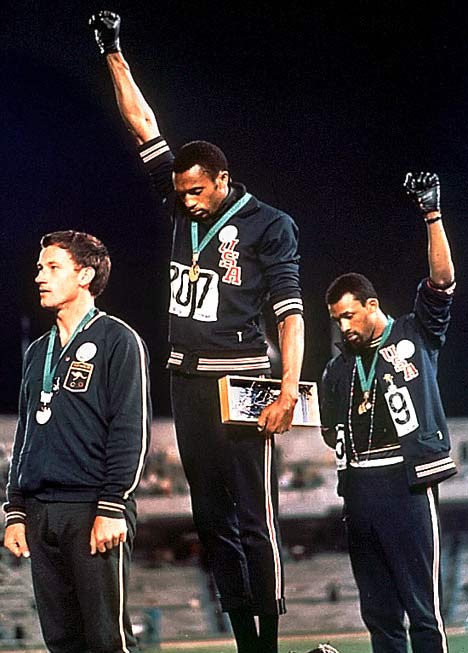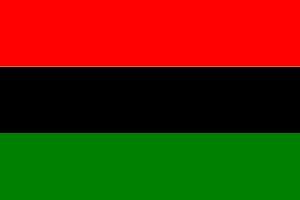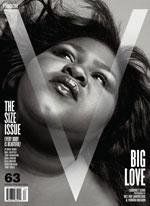http://www.english.illinois.edu/maps/poets/a_f/baraka/sos.htm
On "SOS"
Given the epigraphic function that Randall confers on it, we can reasonably conclude that Baraka's "SOS" is somehow emblematic of the poetic project of many young black writers of the late 1960s, and it is not particularly difficult to identify exactly in what this emblematic quality might consist. We know, after all, that radical black intellectual activism of the late 1960s was characterized by a drive for nationalistic unity among people of African descent. As Larry Neal put it in his defining essay of 1968, "The Black Arts Movement":
In the introduction to their authoritative anthology, Black Nationalism in America (1970), John Bracey, Jr., August Meier, arid Elliott Rudwick identify as the basis of black nationalist thought "[t]he concept of racial solidarity" which, they assert,"is essential to all forms of black nationalism" (p. xxvi). It is precisely this fundamental impulse to racial solidarity that is manifested in Baraka's "SOS." Considered with respect to nationalism, the political import of the poem inheres not in the stridency and exigency of its appeal, but rather in its breadth, in the fact that Baraka's call apparently embraces all members of the African diaspora, as it is directed explicitly and repeatedly to "all black people," thereby invoking a political Pan-Africanism posited as characteristic of the Black Arts project. Moreover, the enjambment of the last two lines and their modification of the injunction definitively transform the SOS from a mere distress signal into a general summons for assembly. What is striking about Baraka's poem, however, is not that it "calls" black people in this nationalistic way but that this is all it does; the objective for which it assembles the black populace is not specified in the piece itself, a fact I take to indicate fundamental difficulties in the nationalist agenda of the Black Arts poets, as will soon become clear.
In the meantime, I think it is useful to consider Baraka's "S0S" as a synecdoche for all of his poetic output of the 1960s, which constituted a challenge to other African-American poets to take up the nationalist ethic he espoused. As the source of this influential call, Baraka can certainly be seen as the founder of the Black Aesthetic of the 1960s, and "SOS" as representative of the standard to which his fellow poets rallied. "S0S" is part of Baraka's collection Black Art, comprising poems written in 1965 and 1966, and published, along with two other collections, in the volume Black Magic Poetry, 1961-1967 (1969). Its message was subsequently engaged by other black writers from different generations and disparate backgrounds. For instance, in her 1972 autobiography, Report from Part One, Gwendolyn Brooks, who built her reputation on her expertly crafted lyrics of the 1940s and 1950s, made Baraka's enterprise her own as she described her new poetic mission in the early 1970s:
What remains certain, in Sanchez's rendering—so certain that it need not be stated explicitly—is the identity of the "enemy" against whom the assembled black troops must struggle. While Sanchez's elliptical reference might appear as somewhat ambiguous at this point, especially after the emergence in the early and mid-1970s of a strong black feminist movement that arrayed itself against racism and sexism, it seems clear enough that in the context of the 1969 Black Arts movement the enemy was most certainly the white "establishment." But this is the only thing that is "known" in Sanchez's poem, and while the identification of a generalized white foe is a central strategy in the Black Arts movement's effort to galvanize the black populace, here it provides a hedge against the overall uncertainty that characterizes the rest of the poem—a definitive core on which the crucial questions about the efficacy of nationalist rhetoric can center and thus themselves still be recognizable as nationalist discourse.
On "SOS"
Jay R. Berry
Baraka pays careful attention to rhythm, even in poems that do not employ or experiment
with traditional forms. "SOS," the opening poem on Black Art, contains
short, terse, telegraphic phrases that are reminiscent of a radio transmission:Calling black peopleContent and form blend effectively in this poem. The radio transmission asks blacks to "come / on in." The final line break calls attention to the word change, thereby emphasizing the message. This word change has at least two connotations. On one level, the phrase invites readers into the book of poetry. In this sense it is a fitting opening poem. On another level, it cajoles blacks into claiming their share of the American political, social, and cultural systems on their own terms.
Calling all black people, man woman child
Wherever you are, calling you, urgent, come in
Black People, come in, wherever you are, urgent, calling
You, calling all black people
Calling all black people, come in, black people, come
on in.
From "Poetic Style in Amiri Baraka’s Black Art," in CLA Journal, December, 1988. Copyright © 1988 by the College Language Association.
Phillip Brian Harper
Dudley Randall's anthology, The Black Poets, published in 1971, is significant
not so much for the texts it provides of folk verse and literary poetry from the
mid-eighteenth through the early twentieth centuries as for its canonization
of poetry from the contemporaneous Black Arts movement. The concluding (and by far the
longest} section of Randall's anthology is titled "The Nineteen Sixties," and it
is prefaced by the short poem "SOS" by Imamu Amiri Baraka (LeRoi Jones), which
is printed not in the main text but on the title page for the section: . . . Given the epigraphic function that Randall confers on it, we can reasonably conclude that Baraka's "SOS" is somehow emblematic of the poetic project of many young black writers of the late 1960s, and it is not particularly difficult to identify exactly in what this emblematic quality might consist. We know, after all, that radical black intellectual activism of the late 1960s was characterized by a drive for nationalistic unity among people of African descent. As Larry Neal put it in his defining essay of 1968, "The Black Arts Movement":
Black Art is the aesthetic and spiritual sister of the Black Power concept. ...The Black Arts and the Black Power concept both relate broadly to the Afro-American's desire for self-determination and nationhood. Both concepts are nationalistic. One is concerned with the relationship between art and politics; the other with the art of politics. (P. 272)Addison Gayle also embraced the nationalist impulse in his conception of the movement, outlined in his 1971 introduction to The Black Aesthetic. According to Gayle, "The Black Aesthetic...is a corrective—a means of helping black people out of the polluted mainstream of Americanism" (p. xxiii}. And in 1973, Stephen Henderson elaborated the development of this impulse through the late 1960s: "The poetry of the sixties is informed and unified by the new consciousness of Blackness ...[, which has] shifted from Civil Rights to Black Power to Black Nationalism to Revolutionary Pan-Africanism ..." (p. 183}. Thus did three of the Black Aesthetic's most prominent theorists conceive the importance of nationalist unity to the Black Arts movement. It probably goes without saying that such a nationalist impulse, having once been manifested, can develop in any number of different directions. For the sake of the present analysis, however, we can suspend consideration of this important point while we confirm the existence of that impulse, in however rudimentary a form, in Baraka's poem.
In the introduction to their authoritative anthology, Black Nationalism in America (1970), John Bracey, Jr., August Meier, arid Elliott Rudwick identify as the basis of black nationalist thought "[t]he concept of racial solidarity" which, they assert,"is essential to all forms of black nationalism" (p. xxvi). It is precisely this fundamental impulse to racial solidarity that is manifested in Baraka's "SOS." Considered with respect to nationalism, the political import of the poem inheres not in the stridency and exigency of its appeal, but rather in its breadth, in the fact that Baraka's call apparently embraces all members of the African diaspora, as it is directed explicitly and repeatedly to "all black people," thereby invoking a political Pan-Africanism posited as characteristic of the Black Arts project. Moreover, the enjambment of the last two lines and their modification of the injunction definitively transform the SOS from a mere distress signal into a general summons for assembly. What is striking about Baraka's poem, however, is not that it "calls" black people in this nationalistic way but that this is all it does; the objective for which it assembles the black populace is not specified in the piece itself, a fact I take to indicate fundamental difficulties in the nationalist agenda of the Black Arts poets, as will soon become clear.
In the meantime, I think it is useful to consider Baraka's "S0S" as a synecdoche for all of his poetic output of the 1960s, which constituted a challenge to other African-American poets to take up the nationalist ethic he espoused. As the source of this influential call, Baraka can certainly be seen as the founder of the Black Aesthetic of the 1960s, and "SOS" as representative of the standard to which his fellow poets rallied. "S0S" is part of Baraka's collection Black Art, comprising poems written in 1965 and 1966, and published, along with two other collections, in the volume Black Magic Poetry, 1961-1967 (1969). Its message was subsequently engaged by other black writers from different generations and disparate backgrounds. For instance, in her 1972 autobiography, Report from Part One, Gwendolyn Brooks, who built her reputation on her expertly crafted lyrics of the 1940s and 1950s, made Baraka's enterprise her own as she described her new poetic mission in the early 1970s:
My aim, in my next future, is to write poems that will somehow successfully "call" (see Imamu Baraka's "SOS") all black people: black people in taverns, black people in alleys, black people in gutters, schools, offices, factories, prisons, the consulate; I wish to reach black people in pulpits, black people in mines, on farms, on thrones(.) (P. 183)Sonia Sanchez, on the other hand, in her 1969 poem, "blk/rhetoric," invoked Baraka's language to question what might happen after the calling had been done:
who's gonna make allSanchez's call—prefaced as it is by her urgent question, and attended by the entreaty to her listeners in the final line—is more pleading than Baraka's, which is unabashedly imperative. I would suggest that the uncertainty that characterizes Sanchez's poem is the inevitable affective result of writing beyond the ending of Baraka's "SOS," which it seems to me is what "blk/rhetoric" does. By calling into question what will ensue among the black collectivity after it has heeded the general call--succumbed to the rhetoric, as it were—Sanchez points to the problematic nature of the black nationalist project that characterizes Black Arts poetry.
that beautiful blk/rhetoric
mean something.
like
I mean
who's gonna take
words
blk/beautiful
and make more of it
than blk/capitalism.
u dig?
i mean
like who's gonna
take all the young/long/haired/
natural/brothers and sisters
and let them
grow till
all that is
imp't is them
selves
moving in straight/
revolutionary/lines/toward the enemy
(and we know who that is)
like. man.
who's gonna give our young
blk people new heros
[. . . .]
( instead of quick/fucks
in the hall/way of
white/america's
mind)
like. this. is an S.0.S.
me. calling. . . .
calling. . . .
some/one.
pleasereplysoon.
What remains certain, in Sanchez's rendering—so certain that it need not be stated explicitly—is the identity of the "enemy" against whom the assembled black troops must struggle. While Sanchez's elliptical reference might appear as somewhat ambiguous at this point, especially after the emergence in the early and mid-1970s of a strong black feminist movement that arrayed itself against racism and sexism, it seems clear enough that in the context of the 1969 Black Arts movement the enemy was most certainly the white "establishment." But this is the only thing that is "known" in Sanchez's poem, and while the identification of a generalized white foe is a central strategy in the Black Arts movement's effort to galvanize the black populace, here it provides a hedge against the overall uncertainty that characterizes the rest of the poem—a definitive core on which the crucial questions about the efficacy of nationalist rhetoric can center and thus themselves still be recognizable as nationalist discourse.
from "Nationalism and Social Division in Black Arts Poetry of the 1960s," in Harper, Are We Not Men? (Oxford UP, 1996.)

















